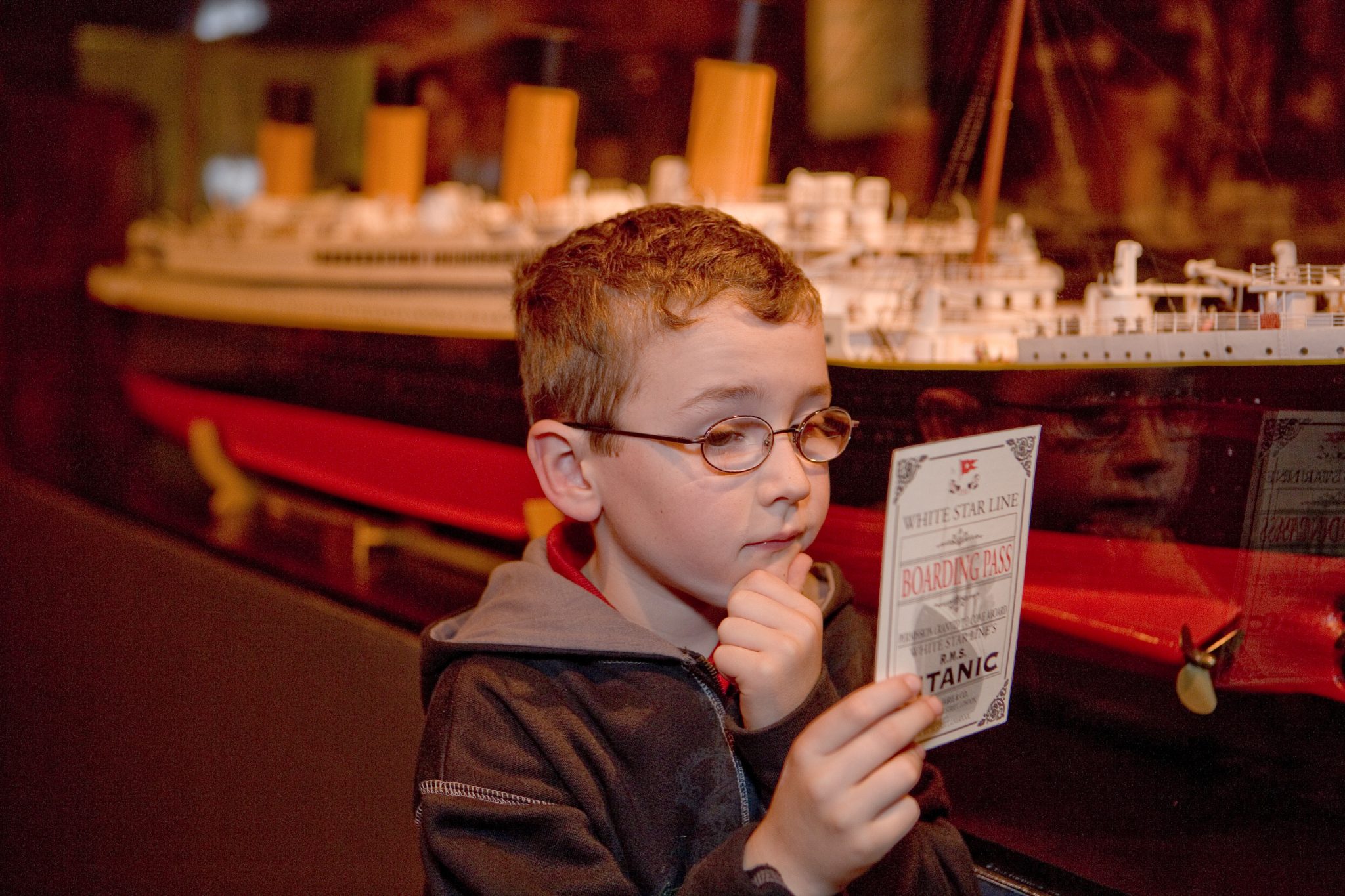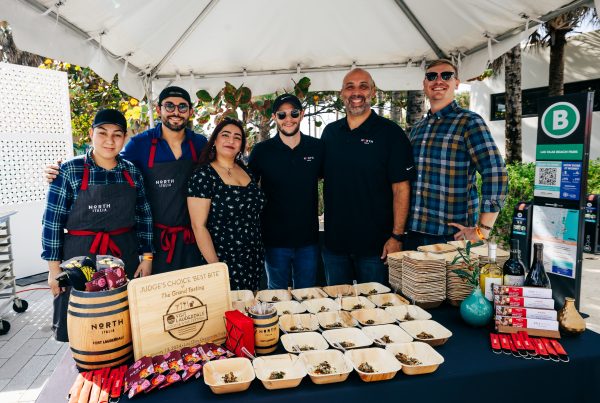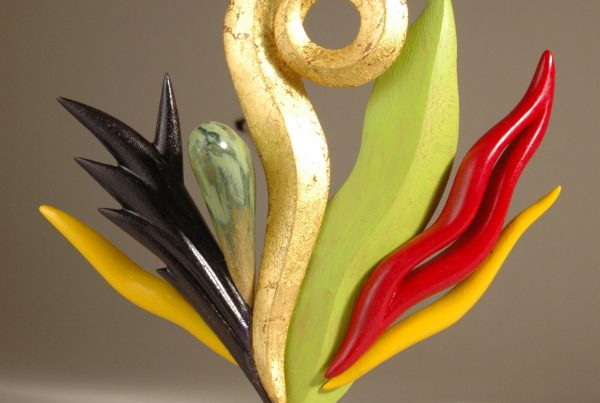Visitors to the Cox Science Center and Aquarium (CSCA) can look forward to an intimate new perspective of the RMS Titanic’s doomed maiden voyage across the Atlantic. Debuting tomorrow, Oct. 12, the “Titanic: The Artifact Exhibition” transports guests back to 1912 through 81 artifacts recovered from the wreckage, as well as detailed accounts of the ocean liner’s passengers and crew, and recreations of the ship’s accommodations.
Guests for the exhibition’s ribbon-cutting ceremony on Tuesday were treated with a harp and violin performance from members of the Palm Beach Symphony, who played the iconic “My Heart Will Go On” by Celine Dion from the 1997 James Cameron film, as well as “Nearer, My God, to Thee,” the song that was played by the Titanic band as the ship sank. After the performance and brief remarks from CSCA President and CEO Kate Arrizza, the “passengers” were encouraged to take their boarding passes and enjoy the exhibit.
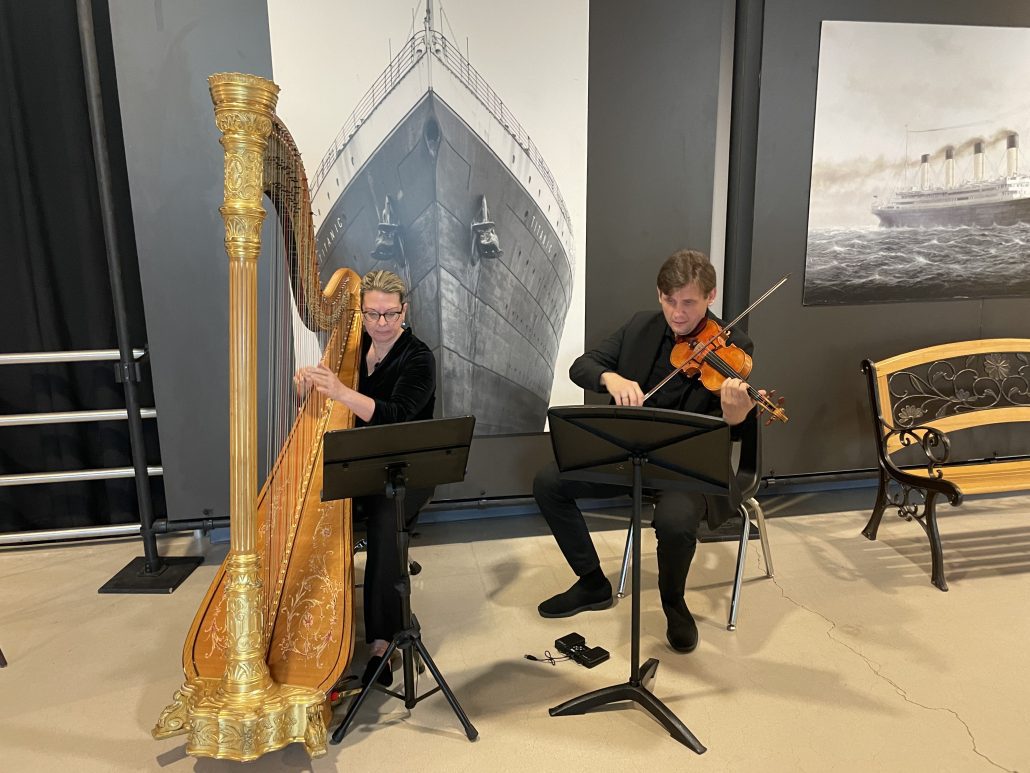
Visitors’ “tickets” into the exhibit are White Star Line boarding passes (the Titanic’s shipping line) that contain the information of a real Titanic passenger including his or her name, reason for traveling and background information. For my visit, I was given the passenger ID of Elizabeth Ramell, a 29 year-old widow and second-class traveler coming home from England where she was mourning the death of her husband. Other details on the boarding pass revealed that tragedy seemed to follow Ramell, who also suffered the loss of her first love in 1902 and her nine-month old child in 1911.
The exhibit itself contains an impressive array of recovered artifacts ranging from the ship’s rivets and bolts to the chandeliers that adorned the liner’s first class smoking room. Items that appeared trivial, such as a workman’s tools, were given a personal dimension with informative text that revealed more about their owner, Howard Irwin, whose name no doubt could be found on a visitor’s boarding pass.
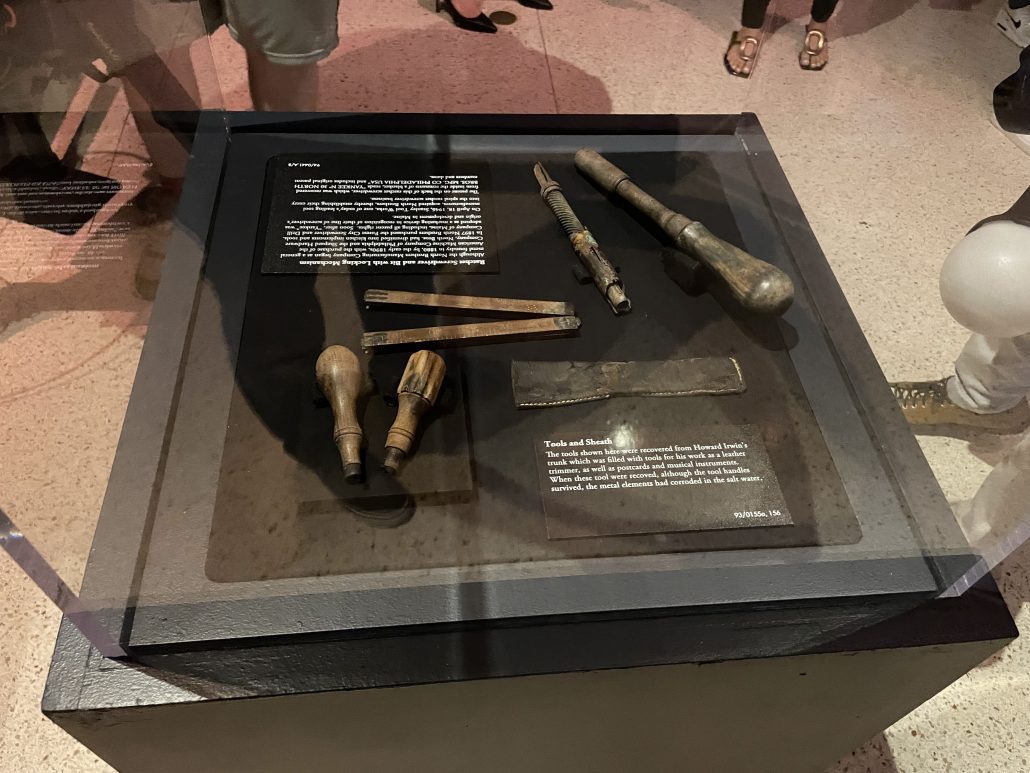
Another aspect highlighted throughout the exhibit is the stark contrast between the experiences of first-, second- and third-class passengers. The ship’s wealthiest patrons enjoyed spacious cabin rooms with full-sized beds and lounge chairs and private baths while the less affluent were packed four to a tiny room in bunk beds. This disparity between rich and poor was evident in not just the rooms or dining options but also in looking at the list of survivors, the exhibit’s final display.
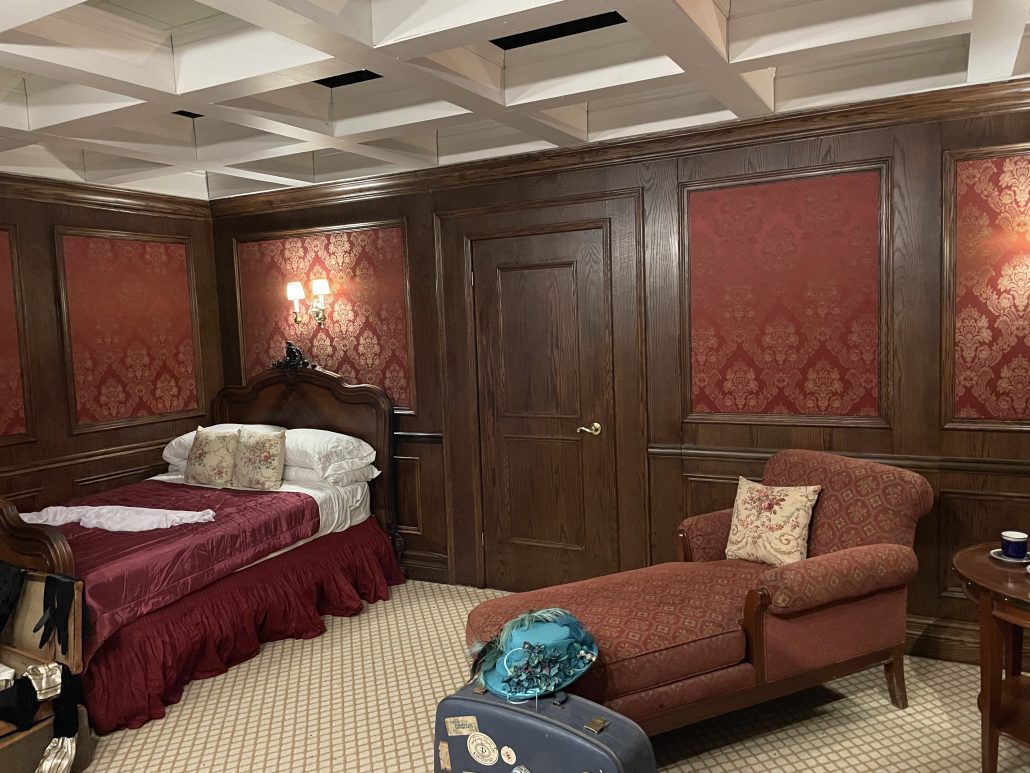
Equally of interest to the artifacts and displays was the information about the ship itself, including its design and historical context. Brainstormed over a dinner party in the summer of 1907 by J. Bruce Ismay and William J. Pirrie, the RMS Titanic was to be one of three ships that would dominate travel across the North Atlantic. The exhibit goes on to reveal details of the ship’s construction and voyage, as well as by-the-minute accounts of the wreck from the crew’s perspective. Also present are historic reenactors of the ship’s passengers and an iceberg display that guests can touch (spoiler alert: it’s cold).
The Cox Science Center’s Titanic exhibit is an incredibly poignant and detailed account of one of history’s most famous maritime disasters. The artifacts and historical accounts ground the tragedy in reality, tying each item to a person or experience. The exhibit will keep you fascinated from the very beginning to the end, where the names of those lost and saved are displayed.
I am happy to report that Elizabeth Rammel was listed among those who survived.

